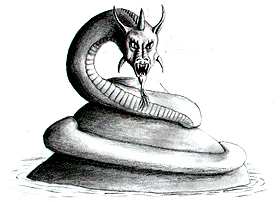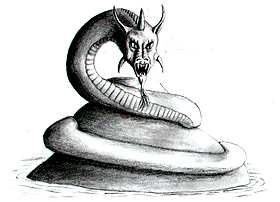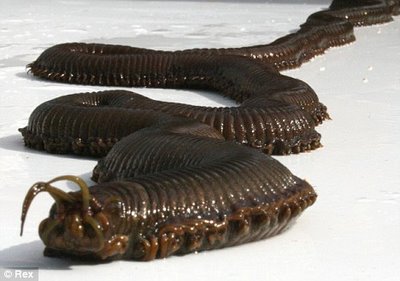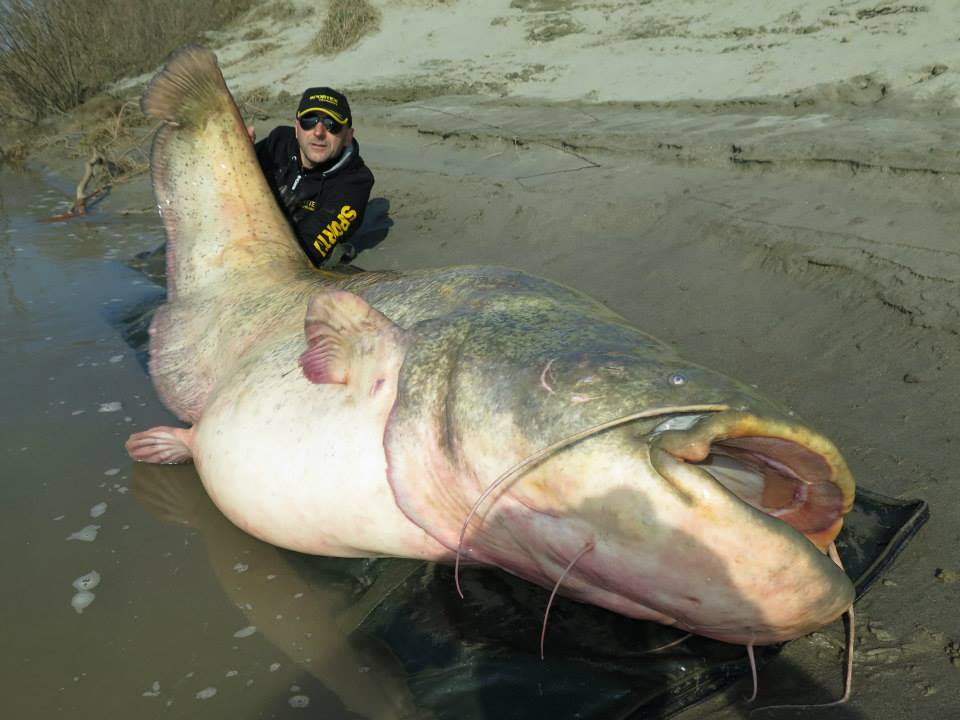I originally posted this on my personal blog, so massive apologies for reusing content, but I thought this particular item would be of equal interest over here and wanted to share with you.
I’m always interested in local folklore, especially if it involves monsters and other exciting spooky stuff. Most places, no matter how small, seem to have some manner of fascinating tale relating to beasts that lurk in their surrounding area, ghosts that haunt their old buildings and all kinds of other odd goings on. I certainly to hope to discover more of them so if you have any from your local towns please, please let me know.
I’m from the North East of England, and us UK north easteners are notoriously a chatty bunch, we’re natural storytellers, spinners of yarns and voyagers on flights of fancy. You can wile away hours in any given North Eastern pub simply by striking up a conversation with a local resident (for best results seek an elder patron) and allowing yourself to regaled with the most fantastical tall tales and enthralling anecdotes. I myself have done this often, and have frequently heard a story so amazing that I have been compelled to tell the purveyor of wonder that I will be forced to steal that particular tale and tell it myself, and such is the glory of the oral tradition.
Yes, us North Easterner folk love a story and I think it’s fairly safe to say that The Lambton Worm is a tale that has a special place in our hearts and is probably the most famous of the fables from our region. The legend of The Lambton Worm has been told and retold evolving from oral tradition through the written word and even into song and pantomime form. So, whisht, lads, haad yor gobs an’ aa’ll tell ye aall an aaful story…..
Young whippersnapper, and heir to Lambton Hall, John Lambton, decided one particular fine Sunday morn that his time would be far better employed on a fishing trip rather than by going to church like a good lad. So, while all the other townsfolk were dutifully attending mass in Brugeford Chapel, John was parked by the River Wear dangling his rod in its murky depths (that sounds entirely more filthy than is really necessary, I apologise).
For a long time John sat without so much as a nibble, but then, all of a sudden, his line was jolted with a terrific force. Naturally assuming that he’d landed the catch of the century, John excitedly set about reeling in the tremendous beast, but the task proved harder than he could have imagined. But steadfast, John refused to give up his prize without a fight and bracing himself against the riverbank he laboured for a seeming eternity until, finally, just as the sheer exertion was threatening to claim him, his line popped free from the water and he landed his magnificent catch on the bank by his feet. Somewhat amazed, young John peered down at creature his efforts had lain before him and saw to his surprise that it wasn’t even nearly the mighty fish he had been expecting. At his feet lay a black wormlike animal, and it was small, astonishingly small for something that had presented him with so much trouble to land. While John contemplated his catch the creature slithered and coiled in the mud beside him and venturing a closer examination John could see that its jaws were indeed mighty, and, he noted, lined with rows of razor sharp teeth that, although small, looked fearsome and deadly.
Just as John was preparing to throw the disappointing, and decidedly unpleasant, brute back into the river he became aware of a presence behind him and turned to find an old man eyeing the creature and crossing himself furiously. When John asked him what was wrong the old man said that he must not throw the creature back t the river, that it would bode badly for young John, but at all costs he must keep the beast and not return it to the river. Obediently, if a little startled, John duly picked up the black worm and cast it into his basket, but as he turned back to question the man further he found he was alone on the riverbank and the old fellow was nowhere to be seen. Suddenly a feeling of deep unease overwhelmed John and the more he looked at the worm the more he knew he must be free of it. The old man’s warning had unnerved him enough not to consider risking returning it to the river, but as he walked home he spotted an old well and seized the opportunity to rid himself of his slithery burden.
For years all was quiet and John Lambton never gave a thought to peculiar creature he had caught that day. But, unbeknownst to our hero all the while the worm was wallowing in the murk of the well, becoming strong and growing, growing and growing Years later while John was off fighting in the crusades villagers began to notice that there was something very wrong with the well. It became apparent that the water was poisoned and unusable and at night eerie vapours were seen rising nefariously from the mouth of the well. As is natural in these situations, the villagers sagely decided that the well had clearly been claimed by an evil force and was now cursed as a result.
Surprisingly it turned out the villagers were absolutely right as early one morning it was discovered that the full grown worm had crawled from its gloomy home and had lain waste to the surrounding farms savagely feeding on all livestock it could find leaving a trail of destruction in its wake. To their horror they also saw that the creature heavy and bloated from its night’s feast had coiled its massive bulk about a rocky outcrop close to the river of its terrible birth.
News swiftly spread through the village and surrounding areas and filled the region with fear and dread. For a while the beast remained still and silent, some of the very brave even dared to creep closer to catch a glimpse of the razor toothed terror, but this relative peace was not to last and all too soon the creature became ravenous once more and embarked upon another bloody rampage devouring everything that lay in its path. The villagers were terrified, but something had to be done, some brave souls banded together to attempt to slay the beast but all who tried were immediately torn to shreds by the worm’s savage teeth or brutally crushed in its mighty coils.
Eventually the beast made its way to Lambton Hall where now only the lord resided. Fortunately the villagers were quick to react and managed to distract creature with offerings of the fattest livestock left alive. And so the ritual began that would last for seven long years, again and again the villagers would sacrifice what livestock they could muster to keep the worm in a sated slumber and prevent it from feasting on all who dwelled there.
When seven whole years had passed John Lambton finally returned from the crusades and saw the terrible fate that had befallen his village. Wracked with tremendous guilt he resolved there and then that he would destroy the evil creature himself and free his people from its servitude. To prepare himself for this dangerous task he visited the local wise woman. Aware of his culpability the wise woman confirmed for John that was indeed his duty to slay the beast, she advised his to seek the blacksmith and have a suit of armour crafted that was wrought with sharpened spearheads at every inch of its surface and then once clad in this new fearsome attire he must lie in wait for the worm at its rocky lair. Convinced by her words John nodded his acquiescence, but, just as he was about to run straight to the blacksmith, the woman’s face darkened and she seized his shoulder with a startling strength. Looking him square in the eye and with a gravity that chilled John to his very core she warned him that if should slay the beast he must then also put to death the first living thing he sees following the act and if failed that task then three times three generations of Lambtons would die badly.
Knowing she spoke the truth John ran as fast he could to the blacksmith’s forge and tasked him to craft his suit. The blacksmith worked tirelessly all through that night and by morning the armour was ready and as John emerged from the forge a crowd of villagers had gathered to cheer their hero and as he passed through them he swore to himself that he would be victorious.

For what seemed like an age John waited, but there was no sign of the worm. He waited and waited and then, just as he was giving up hope, the creature finally emerged raising its enormous, vicious head from the depths of the river a rapacious glint colouring its cold eyes. Without time to think John charged towards the water his sword held high and so began a long the violent battle between man and beast. It soon became apparent that every time the creature attempted to wrap John in its coils or crush him in its maw it was only succeeding in tearing itself up on the razors of the armour. John then knew that if he had the strength to endure the attacks for long enough then all he had to do was wait for the creature to be sufficiently weak and then he could slaughter it and put an end to its tyranny. Steeling his resolve John braced himself for the extensive battle he knew faced. And on the pair raged the sky darkening around them, until, eventually, the last of its strength spent the worm slumped onto the riverbank. Exhausted John struggled to its side and with the last ounce of energy remaining in his aching body plunged his blade right into its heart and blew three sharp blasts on his horn to signal to the servants at the hall to release a hound in order he could complete his vow. But, the joy of victory was short-lived as on hearing the blasts Jon’s father, the lord, was so overcome with delight he rushed to greet his son as he crossed into the hall’s grounds. Devastated John turned away and slew the hound, but it was too late, the vow was broken, the worm was defeated and his people free but for generations none of the Lambtons would die a good death.
 |
| Penshaw Monument; where the worm is said to rest |
The legend of the The Lambton Worm has even done its best to extend beyond its northern folktale status and into more mainstream culture. In 1911 Bram Stoker’s The Lair of the White Worm was published and I think its fair to say that the story borrows heavily from our humble local worm, and of course, who can forget that Ken Russell turned Stoker’s novel into his 1988 classic of the same name. I you haven’t seen Russell’s Lair of the White Worm you must, it’s mental and awesome. You can also hear a few repeated bars of the Lambton Worm song near the end within the melody Peter Capaldi’s character Angus is plays on the bagpipes to lure the acolytes.
You can listen to The Lambton Worm song
here. And here are the lyrics so you can sing along at home.
One Sunday morn young Lambton Went a-fishin’ in the Wear; An’ catched a fish upon his huek, He thowt leuk’t varry queer, But whatt’n a kind a fish it was Young Lambton couldn’t tell. He waddn’t fash to carry it hyem, So he hoyed it in a well.
Whisht! lads, haad yor gobs, Aa’ll tell ye aall and aaful story,
Whisht! lads, haad yor gobs, An’ Aal tell ye ’bout the worm.Noo Lambton felt inclined to gan An’ fight in foreign wars. He joined a troop o’ Knights that cared For neither wounds nor scars, An’ off he went to Palestine Where queer things him befel, An’ varry seun forgot aboot The queer worm i’ the well.Whisht! lads, haad yor gobs, Aa’ll tell ye aall and aaful story,
Whisht! lads, haad yor gobs, An’ Aal tell ye ’bout the worm.
But the worm got fat an’ growed an’ growed, An’ growed an aaful size; He’d greet big teeth, a greet big gob, An’ greet big goggle eyes. An’ when at neets he craaled aboot To pick up bits o’news, If he felt dry upon the road, He milked a dozen coos.
Whisht! lads, haad yor gobs, Aa’ll tell ye aall and aaful story,
Whisht! lads, haad yor gobs, An’ Aal tell ye ’bout the worm.
This feorful worm wad often feed On calves an’ lambs an’ sheep, An’ swally little bairns alive When they laid doon to sleep. An’ when he’d eaten aal he cud An’ he had has he’s fill, He craaled away an’ lapped his tail Seven times roond Pensher Hill.
Whisht! lads, haad yor gobs, Aa’ll tell ye aall and aaful story,
Whisht! lads, haad yor gobs, An’ Aal tell ye ’bout the worm.
The news of this most aaful worm An’ his queer gannins on Seun crossed the seas, gat to the ears Of brave an’ bowld Sir John. So hyem he cam an’ catched the beast An’ cut ‘im in three halves, An’ that seun stopped he’s eatin’ bairns, An’ sheep an’ lambs and calves.
Whisht! lads, haad yor gobs, Aa’ll tell ye aall and aaful story,
Whisht! lads, haad yor gobs, An’ Aal tell ye ’bout the worm.
So noo ye knaa hoo aall the folks On byeth sides of the Wear Lost lots o’ sheep an’ lots o’ sleep An’ lived in mortal feor. So let’s hev one to brave Sir John That kept the bairns frae harm Saved coos an’ calves by myekin’ haalves O’ the famis Lambton Worm
Whisht! lads, haad yor gobs, Aa’ll tell ye aall and aaful story,
Whisht! lads, haad yor gobs, An’ Aal tell ye ’bout the worm.
Noo lads, Aa’ll haad me gob, That’s aall Aa knaa aboot the story Of Sir John’s clivvor job Wi’ the aaful Lambton Worm!
Honestly, those are the words. Because I’m helpful like that I shall now translate for those of you unfamiliar the local dialect
One Sunday morning young Lambton went fishing in the Wear; and caught a fish upon his hook, He thought it looked very queer, but what manner of fish it was Young Lambton couldn’t tell. He could not be bothered to carry it home, so he threw it in a well.
Hush, gentlemen, hold your tongues, And I will tell you all an awful story,
Hush, gentlemen, hold your tongues, and I will tell you about the worm.Now Lambton felt inclined to go and fight in foreign wars. He joined a troop of’ Knights that cared for neither wounds nor scars, and off he went toPalestinewhere queer things befell him, and very soon forgot about the queer worm in the well.Repeat chorus
But the worm got fat and grew and grew, and grew an awful size; He had great big teeth, a great big mouth, and great big goggle eyes. And when at nights he crawled about to pick up bits of news, if he felt dry upon the road, he milked a dozen cows.Repeat chorusThis fearful worm wouldd often feed on calves and lambs and sheep, and swallowed little children alive when they laid down to sleep. And when he’d eaten all he could and he had eaten his fill, he crawled away and lapped his tail seven times round Penshaw Hill.
Repeat chorus
The news of this most awful worm and his queer goings on soon crossed the seas and got to the ears of brave and bold Sir John. So home he came and caught the beast and cut him in three halves, and that soon stopped eating children, and sheep and lambs and calves.
Repeat chorus
So now you know how all the folks on both sides of the Wear Lost lots of sheep and lots of sleep and lived in mortal fear. So let us drink to brave Sir John that kept the children from harm saved cows and calves by cutting in half the famous Lambton WormRepeat chorus
Now gentlemen, I’ll hold my tongue because that is all I know about the story of Sir John’s clever job with the awful Lambton Worm!








No Comments